#ancient coinage
Explore tagged Tumblr posts
Text

This coin, from 70AD, almost 2000 years ago, says "Shekel of Israel" on the front, and "Jerusalem the Holy" on the back.
Jews are indigenous to Israel, and the Muslims are the colonizers, the imperialists, and oppressors.
The faux-Palestinian narrative is simply a case of basic gaslighting 101.
#gasloghting#israel#secular-jew#jewish#judaism#israeli#jerusalem#diaspora#secular jew#secularjew#islam#indigenous#indigeneity#Israel coinage#Israel coins#ancient coinage#ancient coins#you can't colonize your own land#Jews are indigenous to Israel
142 notes
·
View notes
Text
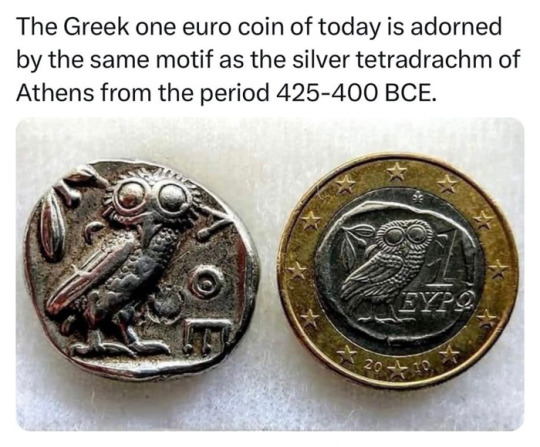
13K notes
·
View notes
Text


Nicely preserved Roman coin featuring a portrait of Agrippina the Elder, the mother of Emperor Caligula. Agrippina died in exile during the reign of Tiberius. Her son retrieved her remains and had her reinterred in the Mausoleum of Augustus in a show of familial piety. The coin was minted during his reign.
#ancient rome#roman empire#ancient history#ancient culture#julio claudian dynasty#agrippina the elder#agrippina maior#coin#roman coin#roman coinage#reign of caligula#coinage#its probably just accidental scratch but she looks as if she's crying
224 notes
·
View notes
Text

Victory in Britain
IMPERA TOR II (around) BRITAN SC (across)
Imperator for the second time - Britain - By Decree of the Senate
This coin shows a winged figure of Victory standing on a globe and holding a wreath and a palm branch over her left shoulder. The Imperial Acclamation awarded to the emperor for his victory in Britain is proclaimed. The Roman base metal coins were issued by "Decree of the Senate".
Hunterian Museum, Glasgow
#romans#roman empire#roman#archaeology#coin#coins#ancient living#ancient cultures#ancient craft#metalwork#symbols#victory#Roman society#roman coinage
109 notes
·
View notes
Text

Found in an antique shop in York 🪙
#York#antique#antiques#coin#coins#ancient coins#emperor claudius#Claudius#roman emperor#roman empire#roman era#roman#Rome#ancient rome#classical antiquity#antiquity#coin collecting#numismática#numismatics#numismatist#antique shop#antique store#antique coin#emperor#coinage
12 notes
·
View notes
Text

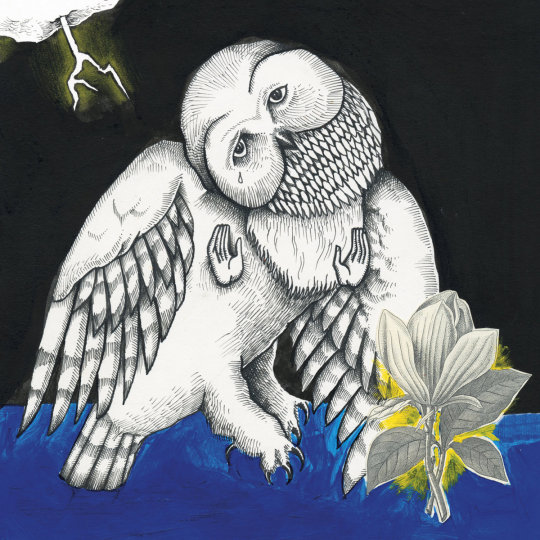

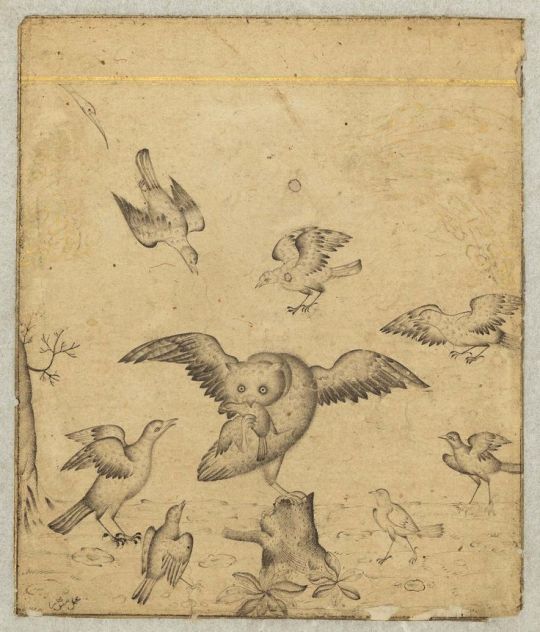



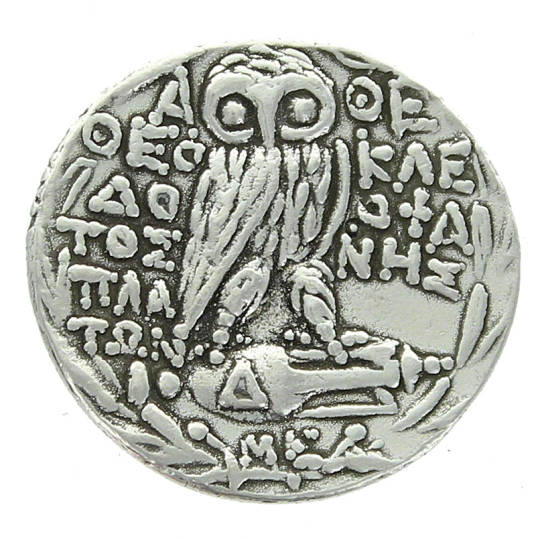

owling. . .. jason molina .. central asian owl bad omen conceptions.. killing the owl gaining legitimacy .. but the owl is urself. .. the owl is a self sabotaging possessions.. positive owl symbolism .. the owl is very wise .. it can see a lot (blessing or curse?) .. the owl love lowkey killing you but it's good also? Let me yap ..#ITSOWLTIME
#owls!#owl#art#bird art#owl art#greek coinage#ancient greece#mughal art#jahangir#persian art#jason molina#songs ohia#magnolia electric co#album art#the mountain goats#tmg#miniature painting
13 notes
·
View notes
Text

Marcus Antonius AR Denarius c. (42 BC). Rome Mint. C. Vibius Varus, moneyer. Obv. Bare head of Mark Antony right, with short beard. Rev. Inscribed, VARVS C VIBIVS. Fortuna standing left, holding Victory and cornucopia.
#mark antony#marcus antonius#rome#roman history#ancient rome#roman republic#roman empire#marc antony#numismatics#coinage#ancient coins#silver coins
11 notes
·
View notes
Note
Boring question but what was Alexander's monetary policy? Specifically regarding circulating currency in relation to his old and new territories
Alas, I have absolutely no idea. Ha.
BUT, here's a website from no less an institution than Brown, albeit about dating his coins. Aaaaand, it come with footnotes to some very important publications on Alexander numismatics (the fancy term for the study of coins).
Dating the Coinage of Alexander the Great
Again, I realize this is more about archaeology than Alexander's finances, but I hope the sources in the footnotes will be of use!
Another, from the American Numismatics Society:
Studies in the Macedonian Coinage of Alexander the Great
Last, Frank Holt's The Treasures of Alexander the Great (Oxford, 2016) should off something a bit more about his finances.
#alexander the great#coinage of alexander the great#ancient numismatics#macedonian coinage#alexander's finances#Classics#classical numismatics#asks
6 notes
·
View notes
Text
Lead Contamination

By Alchemist-hp (talk) (www.pse-mendelejew.de) - Own work, FAL, https://commons.wikimedia.org/w/index.php?curid=12381318
Lead is a heavy metal of atomic number 82 that melts at a fairly low temperature of about 327°C and is shiny gray when freshly cut but then tarnishes to a dull grey. It is found most often with sulfur and is fairly light so it has a relatively high concentration in the crust, being the 36th most common element in the crust, exceeding 2,000,000,000 tons. It is also commonly 'contaminated' with other elements, such as Arsenic, tin, silver, and gold.

Source: https://www.nature.com/articles/s43247-024-01921-7
With the fascination with silver, gold, and tin in the neolithic and moving forward in time, lead balls found dating to 7,000-6,500 BCE are thought to be the first evidence of smelting. In Greece, there's evidence of lead contamination of a waterway found that goes back more than 5000 years, likely due to silver smelting, which released lead into the surrounding environment, including the atmosphere. There is also an indication that this pollution increased sharply about 146 BCE, which happens to line up with the Roman conquest. This increase also shows up in ice cores from Greenland, which also showed the effect of the deforestation caused by the Romans. Jörg Pross from Heidelberg University's Institute of Earth Sciences said that 'The combined data on lead contamination and vegetation development showed when the transition from agriculture to monetary societies took place and how that impacted the environment.'

By Wolfgang Sauber - Own work, CC BY-SA 3.0, https://commons.wikimedia.org/w/index.php?curid=16032169
The Roman Empire also used a lot of lead as a decorative material, including for coffin linings and decorations in Judea. Lead sling bullets have been found that date back to the 5th century BCE. Romans used lead for pipes that carried water for many reasons, including it's low melting point and resistance to corrosion over other metals they had access to and the sweetness it conferred to drinks and food, especially compared to copper, which tended to confer a bitter taste as it formed verdigris.

By Sebastian Le Clerc - Taken from Vitruvius on Architecture by Thomas Gordon Smith.
Vitruvius, a Roman author, wrote about the dangers of lead, though whether Romans actually knew of the dangers of lead poisoning is still a question of debate among scholars. Archaeological research shows that the lead pipes didn't leach enough lead to be dangerous. Those who were poisoned were associated with Saturn, being dark and cynical, which also leads to the association of lead being the 'father of metals', though it was also considered 'low' and 'cheap' due to its availability.
1 note
·
View note
Text
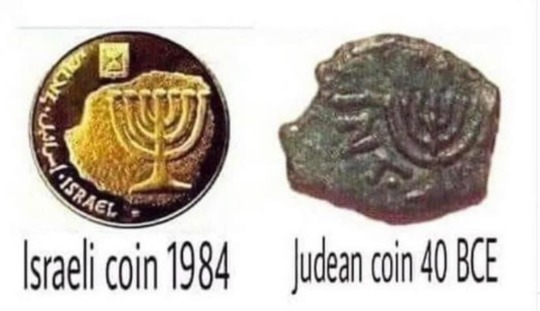
Jews are indigenous to Judea (and Palestine). Not Arabs. Not Muslims.
#israel#secular-jew#jewish#judaism#israeli#jerusalem#diaspora#secular jew#secularjew#islam#judea#judea and samaria#Samaria#coinage#ancient coins#Judean#indigenous#indigeneity
298 notes
·
View notes
Text
Solidus Coin of Emperor Theophilos(829-842)

Emperor Theophilos was Byzantine Empire during the Second Iconoclasm before the victory of Orthodoxy which would settle all question on the issues of using images to represent Christians.
#eastern roman empire#roman emperor#coins#roman empire#ancient coins#byzantine empire#coinage#christians
1 note
·
View note
Text



Coins with the image of Nero Claudius Drusus Germanicus, minted during the early reign of his son Claudius.
#ancient rome#julio claudian dynasty#ancient culture#drusus the elder#nero claudius drusus#ancient art#coins#ancient coins#coinage#roman coins
20 notes
·
View notes
Text

Corbridge Roman Coin Hoard and Jug, Corbridge, Northumberland (UK), about 160 CE, The British Museum, London
These 160 gold aureus coins were found below the floor of a Roman house in Corbridge in 1911. They were stored in a bronze jug, their true value hidden by two bronze coins wedged in its neck. When the jug was lifted out of the ground, the weight of the gold broke it, revealing the hoard.
#romans#roman empire#Roman Hoard#ancient sites#ancient living#ancient craft#metalwork#coinage#coins#wealth#status#archaeology#british museum#history
53 notes
·
View notes
Text
#medieval coins#ancient currency#historical coins#Middle Ages coins#medieval numismatics#medieval silver coins#medieval gold coins#medieval copper coins#medieval coinage#medieval mints#medieval economy#medieval trade#ancient coins#coin collecting#medieval artifacts#medieval currency#medieval money#feudal coins#medieval kings#medieval monarchs#medieval Europe coins#medieval Islamic coins#Byzantine coins#medieval treasures#medieval coin hoard#medieval coin finds.
1 note
·
View note
Text
Unearthing History: The Birth of Coinage in Ancient Mesopotamia
Written by Delvin In the annals of human history, the concept of money stands as a pivotal development that revolutionized trade and commerce. Tracing back to around 2500 BC in the ancient lands of Mesopotamia, the birth of coinage marks a significant milestone in the evolution of economies and societies. Mesopotamia, known as the cradle of civilization, was the birthplace of many…
View On WordPress
#dailyprompt#Financial#Financial Education#Financial Literacy#knowledge#money#Money Fun Facts#The Birth of Coinage in Ancient Mesopotamia
0 notes
Text
Cleopatra VII Thea Neotera (51-30 BC), AE Diobol (80 Drachmae), Mint, Alexandria, between 50 - 40 BC.
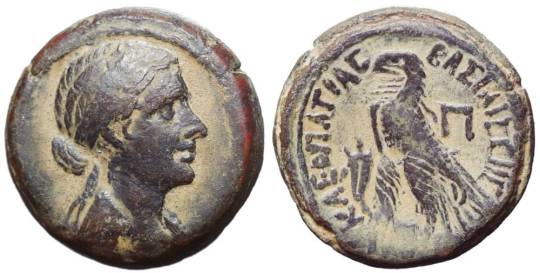
Ob. Diademed and draped bust of Cleopatra, left. Rev. Eagle standing left on thunderbolt; in left field, cornucopia and in right field, Π. Inscribed, KΛEOΠATPAΣ BAΣIΛIΣΣHΣ, right.
Cleopatra VII issued these coins when she was in her twenties. They were minted in Alexandria, Egypt, between 50 and 40 BC. They are all different because the minting process was manual.
Nevertheless, these are probably the ones that most accurately represent her.
32 notes
·
View notes